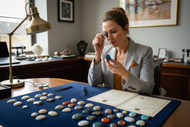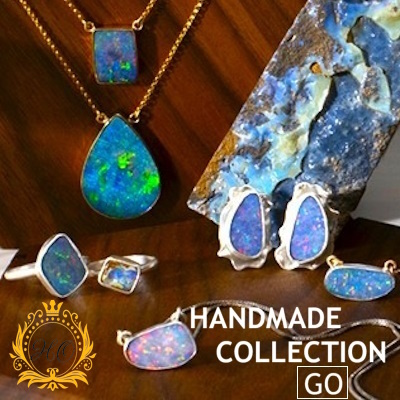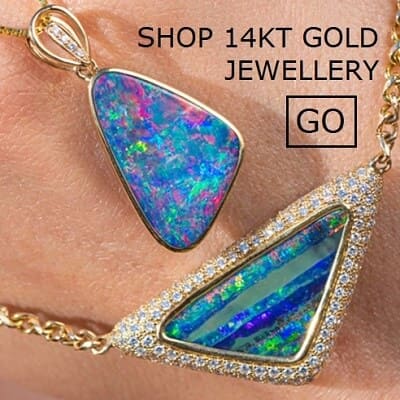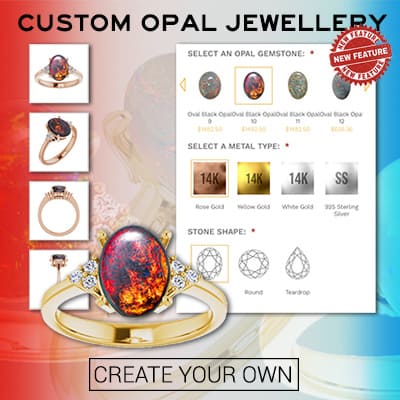Opal Gemstone Selection Process: A Step-by-Step Guide
Posted by AOD on 22nd Oct 2025
Opal Gemstone Selection Process: A Step-by-Step Guide
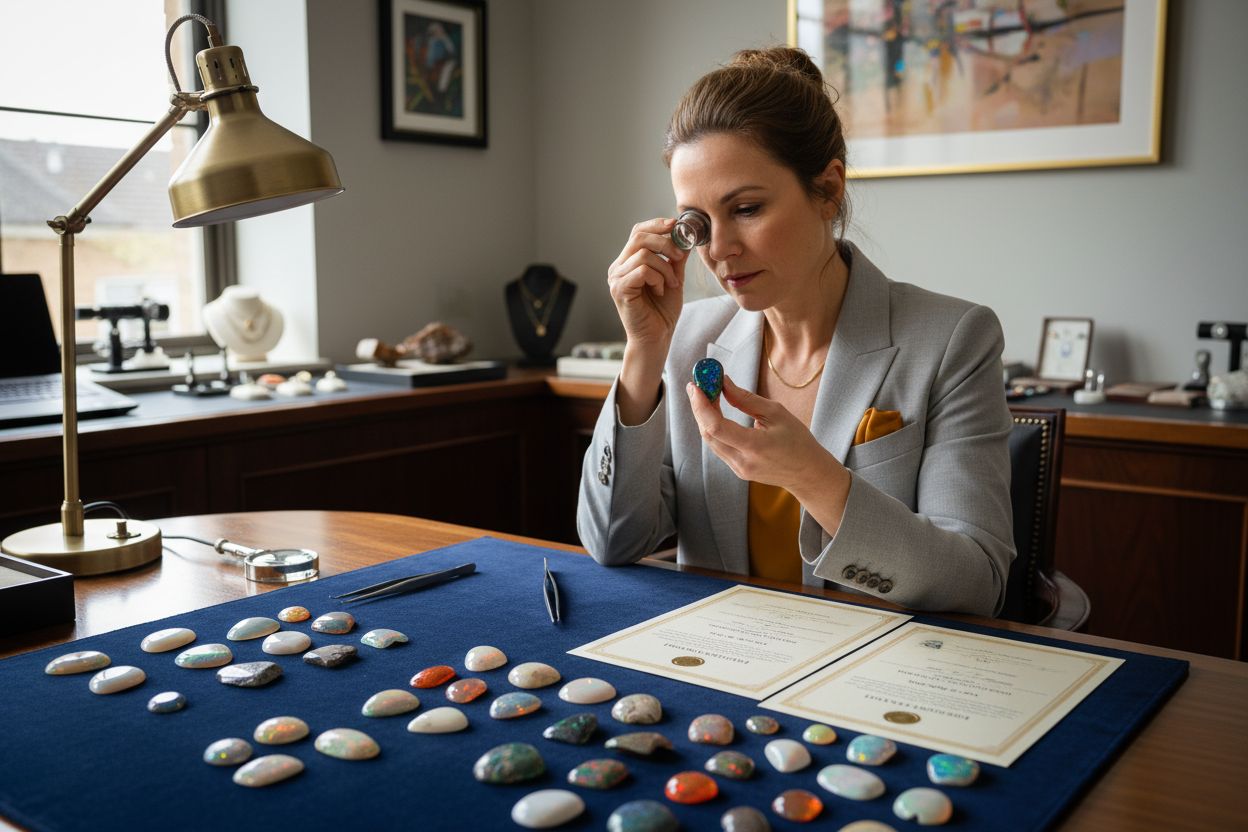
Did you know that over 90 percent of the world’s opals come from Australia? These gemstones captivate collectors and jewelry lovers with their shifting colors and rare beauty. Choosing the right opal can feel overwhelming because each type comes with its own colors, origins, and unique appeal. Knowing how to spot key differences and what to look for can make the search rewarding and help you find a gem worth treasuring.
Table of Contents
- Step 1: Identify Your Desired Opal Type And Origin
- Step 2: Evaluate Color Play And Pattern Quality
- Step 3: Examine Clarity, Transparency, And Body Tone
- Step 4: Check Authenticity And Ethical Sourcing Proof
- Step 5: Verify Setting Options And Final Craftsmanship
Quick Summary
| Key Point | Explanation |
|---|---|
| 1. Identify opal type and origin. | Understand unique characteristics of opals to select the best color and type for your needs. |
| 2. Evaluate color play and patterns. | Assess opals for even color distribution and brightness under natural light for accurate representation. |
| 3. Examine clarity and body tone. | Check for translucency, inclusions, and consistent body tone to gauge overall quality and visual appeal. |
| 4. Verify authenticity and ethical sourcing. | Request documentation proving the opal’s origins and ensure ethical practices in mining and selling. |
| 5. Assess setting options and craftsmanship. | Choose protective settings and check for quality craftsmanship to ensure the opal’s beauty and durability long-term. |
Step 1: Identify Your Desired Opal Type and Origin
Selecting the perfect opal begins with understanding the unique characteristics and origins of different opal varieties. This critical first step will help you narrow down your selection based on color, appearance, and geological background.
Australia offers a stunning array of opal types, each with its distinctive qualities. According to geological research from Geoscience Australia, opals are classified into several key categories based on their appearance and source location.
Let’s explore the primary opal types you might consider:
Here’s a comparison of the main opal types by their key characteristics:
| Opal Type | Origin Location | Body Tone | Main Colors |
|---|---|---|---|
| Black Opal | Lightning Ridge (Australia) | Dark | Intense multi-color |
| White Opal | South Australia | Light | Soft pastel hues |
| Boulder Opal | Queensland (Australia) | Medium to dark | Bright, patterned colors |
| Fire Opal | Mexico | Transparent to translucent |
Red, orange, yellow |
-
Black Opals: Prized for their dark body tone and vibrant play-of-color, these gems originate primarily from Lightning Ridge in New South Wales. They represent the most valuable and rare opal variety.
-
White Opals: Featuring pale colors on a lighter background, these opals are commonly found in South Australia. They offer a softer, more subtle aesthetic compared to black opals.
-
Boulder Opals: Unique in formation, these opals develop within ironstone boulders and are predominantly mined in Queensland. They often showcase dramatic color patterns integrated with the surrounding stone.
-
Fire Opals: Distinguished by their fiery hues of red, orange, and yellow, these distinctive stones are mainly sourced from Mexico. They bring a warm, intense color palette to jewelry designs.
When identifying your desired opal, consider factors like color intensity, background tone, and the specific region of origin. Each type tells a different geological story and offers unique visual characteristics.
Pro Tip: View opals under natural light to truly appreciate their color play and unique characteristics. Online images can be misleading, so whenever possible, examine the stone in person.
Your next step will involve understanding the grading and quality assessment of your chosen opal type, which will help you make an informed selection. Learn more about opal types to refine your understanding before making a purchase.
Step 2: Evaluate Color Play and Pattern Quality
Understanding the visual magic of opals requires a keen eye for their unique light interaction and color patterns. This step will help you appreciate the intricate science behind an opal’s mesmerizing display.
According to Geoscience Australia, opals create their stunning colors through a fascinating process of light diffraction. The internal structure of silica spheres determines the color spectrum you see.
Color play in opals depends on two critical factors:
-
Silica Sphere Size: Larger spheres can produce the full color range including rare red hues. Smaller spheres typically generate blues and greens.
-
Body Tone: The background color significantly influences the perceived vibrancy of the opal’s color play. Darker body tones often enhance color intensity and contrast.
When evaluating an opal, look for these key visual characteristics:
- Color Distribution: Seek even color spread across the stone
- Brightness: Vibrant colors that catch light dramatically
- Pattern Consistency: Smooth transitions between color zones
- Clarity: Minimal inclusions or imperfections
Pro Tip: Always examine opals under natural white light to get the most accurate representation of their true color potential.
Professional gemologists use specialized lighting and magnification to assess color play.
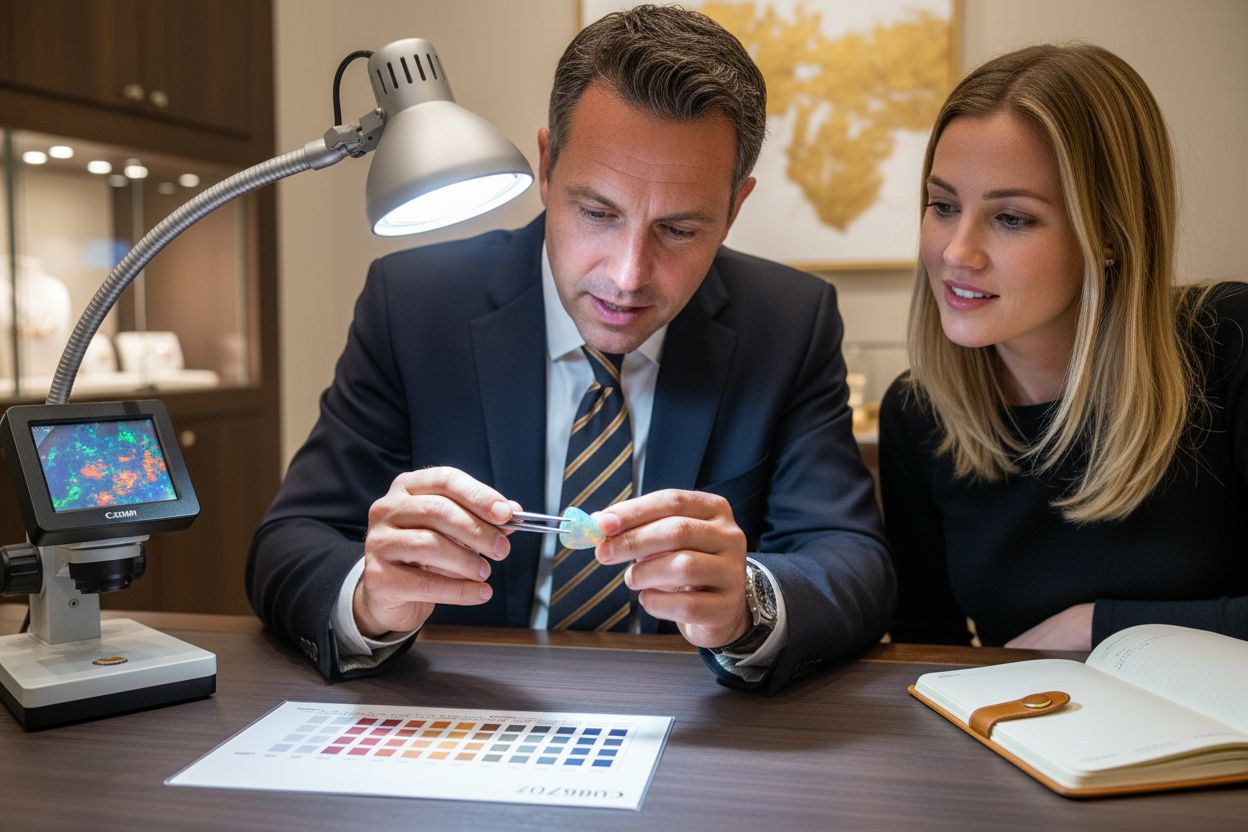 For most buyers, a bright room with indirect sunlight provides the best viewing conditions.
For most buyers, a bright room with indirect sunlight provides the best viewing conditions.
Explore opal stone history and characteristics to deepen your understanding of these remarkable gemstones. Your next step involves assessing the opal’s overall quality and grading.
Step 3: Examine Clarity, Transparency, and Body Tone
Evaluating the intricate details of an opal requires a systematic approach to understanding its physical characteristics. This step will guide you through assessing the opal’s clarity, transparency, and body tone with a professional eye.
According to Geoscience Australia, opals have unique physical properties that directly impact their visual appeal. With a hardness of 5.5–6 on the Mohs scale, these gemstones are relatively delicate and require careful examination.
Clarity and transparency in opals are nuanced characteristics:
-
Natural Opacity: Opals are typically cloudy and at best only semi-transparent. In their purest form, the mineral is colorless
-
Impurity Influence: The characteristic colors and tints result from mineral impurities within the stone
-
Transparency Spectrum: Ranging from completely opaque to slightly translucent, each opacity level contributes to the opal’s unique character
Body tone plays a crucial role in an opal’s overall appearance and value:
-
Tone Range: Body tones can vary from light to dark
-
Color Interaction: Darker body tones often enhance the perceived intensity and contrast of the opal’s color play
-
Visual Depth: The body tone creates a background that either amplifies or mutes the stone’s internal color patterns
Pro Tip: Use a jeweler’s loupe or magnifying glass to closely inspect the opal’s surface and internal structure. Look for consistent coloration and minimal inclusions.
When examining an opal, consider these key factors:
- Overall translucency
- Presence of inclusions or internal fractures
- Consistency of body tone
- Color distribution within the stone
Learn more about opal characteristics to refine your understanding. Your next step involves understanding the grading process that determines an opal’s market value.
Step 4: Check Authenticity and Ethical Sourcing Proof
Navigating the world of opal purchasing requires a discerning eye for authenticity and responsible sourcing. This critical step will help you verify the genuine nature of your potential gemstone and understand its ethical origins.
Geoscience Australia highlights the rich history of Australian opals, noting that while they found limited European market favor in the late 1800s, they became a global commercial success in the 1900s. Today, Australia remains the world’s largest opal producer.
Authenticity verification involves multiple key strategies:
-
Origin Documentation: Request official certificates confirming the opal’s geographical source
-
Provenance Tracking: Seek detailed information about the specific mine and extraction process
-
Geological Certification: Professional gemological reports can validate the stone’s natural origin
Ethical sourcing requires careful investigation:
-
Mining Conditions: Confirm the working environments meet international labor standards
-
Environmental Impact: Understand the mining practices used in extraction
-
Fair Trade Practices: Verify fair compensation for miners and local communities
Pro Tip: Reputable sellers will be transparent about their sourcing and happy to provide comprehensive documentation about the opal’s journey from mine to market.
Key documents to request include:
- Certificate of Authenticity
- Gemological Laboratory Report
- Origin Verification Statement
- Ethical Sourcing Declaration
Learn more about opal stone history and ethical considerations to deepen your understanding. Your final step involves comparing prices and making an informed purchasing decision.
Step 5: Verify Setting Options and Final Craftsmanship
Selecting the right setting for your opal is crucial to preserving its beauty and ensuring long-term durability. This step will guide you through understanding the intricate relationship between opal protection and aesthetic design.
According to Geoscience Australia, opals have a relatively soft hardness of 5.5–6 on the Mohs scale. This characteristic demands specialized handling and protective settings to prevent potential damage.
Setting considerations for optimal opal protection:
-
Bezel Settings: Provide complete metal coverage around the stone’s perimeter
-
Protective Mountings: Ensure metal edges shield the opal from direct impact
-
Raised Settings: Minimize direct contact with surfaces that might scratch the stone
Craftsmanship quality involves evaluating multiple aspects:
-
Precision of Stone Placement: Perfectly aligned and secured opal
-
Metal Quality: Smooth, well-finished settings without rough edges
-
Symmetry and Balance: Harmonious design that complements the opal’s natural characteristics
Pro Tip: Always inspect the setting under magnification to check for microscopic imperfections that could compromise the opal’s integrity.
Key factors to assess in final craftsmanship:
- Secure Stone Mounting
- Smooth Metal Finish
- Balanced Overall Design
- Protection Against Potential Damage
Learn more about opal stone characteristics to enhance your understanding of proper gemstone care. You are now ready to make an informed and confident opal selection.
Discover Authentic Australian Opals with Confidence and Care
Choosing the perfect opal can feel overwhelming when faced with complex details like color play, body tone, and ethical sourcing. If you want to avoid uncertainty and embrace the true beauty and history behind your gemstone, understanding every step is critical. This article breaks down the selection process, but finding a trusted source that offers genuine, ethically mined opals is just as important.

At Australian Opal Direct, we specialize in providing verified Australian opals sourced directly from renowned mining regions such as Lightning Ridge and Queensland. Our curated collection features stunning rings, pendants, and custom designs that highlight each opal’s unique colors and patterns. With free shipping, a 90-day warranty, and transparent origin documentation, you can shop confidently knowing your gem meets the quality benchmarks discussed here. Explore our Nature’s Light Collection to experience the vibrancy of authentic opals shaped by nature and craftsmanship. Begin your journey toward owning an exquisite Australian opal today and feel the energy that only a truly genuine gemstone can bring.
![]()
Frequently Asked Questions
What types of opals should I consider when starting the selection process?
Understanding the various opal types is crucial. Begin by exploring the classifications such as Black, White, Boulder, and Fire opals. Familiarize yourself with their unique characteristics, colors, and sources to narrow down your options effectively.
How do I evaluate the color play and pattern quality of an opal?
Evaluate color play by examining the distribution, brightness, and pattern consistency of the stone. Look for vibrant colors that show a smooth transition across the opal’s surface, ensuring you check under natural light for the best representation.
What aspects should I look for while examining the clarity and body tone of an opal?
When assessing clarity, check for inclusions and the stone’s overall transparency. Body tone should also be analyzed; darker tones often enhance color vibrancy. Use a jeweler’s loupe to inspect these details closely for a better evaluation.
How can I verify the authenticity and ethical sourcing of an opal?
Request documentation such as a Certificate of Authenticity and an Ethical Sourcing Declaration to confirm the opal’s origins. Verify mining conditions and practices to ensure ethical sourcing, giving you peace of mind about your purchase.
What are the best setting options to protect my opal?
Opt for bezel settings as they provide complete coverage around the opal, minimizing exposure to potential damage. Ensure the setting is well-finished and securely holds the stone to protect its integrity effectively.
How do I assess the overall craftsmanship of an opal setting?
Examine the precision of stone placement and the quality of the metal used in the setting. Look for a balanced design and smooth finishes, as these factors contribute significantly to the durability and aesthetics of your opal jewelry.
Recommended
- Opal Stone 101: History, Symbolism, and Uses - Australian Opal Direct
- How to Design Custom Opal Rings for Luxury Jewelry Lovers - Australian Opal Direct
- What Are the Different Types of Opal? - Australian Opal Direct
- How to Care & Handle Opals | Australian Opal Direct
- Amazonite Vertus | Comment Utiliser l’Amazonite en Lithothérapie ? – Boutique Lithotherapie
